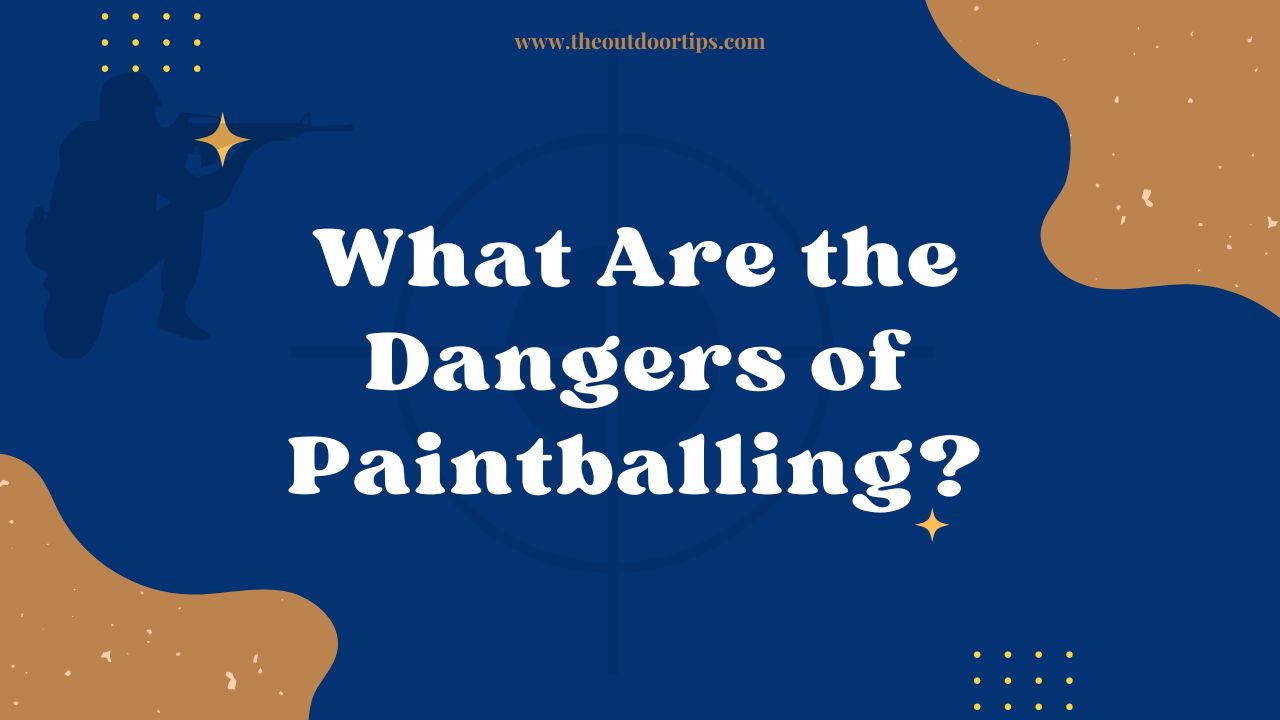Paintballing, an exhilarating and adrenaline-fueled activity, offers players an opportunity to engage in strategy, teamwork, and competition. However, like any physical sport, paintballing comes with its own set of inherent risks that participants need to be aware of. This article delves into the various dangers associated with paintballing, shedding light on potential injuries and hazards that players should consider as they step onto the field.

What Are the Dangers of Paintballing?
Short Answer: Paintballing involves risks including physical injuries, eye injuries, trips and falls, sprains and strains, and dehydration/heat exhaustion.
Paintballing poses several dangers that players should be mindful of. While the sport can be immensely enjoyable, it’s important to recognize the potential risks involved to ensure a safe and secure experience.
1. Physical Injuries
The impact of paintballs hitting the body can lead to a range of physical injuries. While bruises and welts are the most common, players may also experience:
- Minor Abrasions: The force of impact can lead to minor abrasions, particularly on areas with thin skin or where the clothing is less protective.
- Cuts and Scrapes: In instances of close-range shots or collisions, paintball markers can potentially cause cuts or scrapes on exposed skin.
2. Eye Injuries
Eye injuries are a significant concern in paintballing due to the vulnerability of the eyes. The following risks are associated with eye injuries:
- Corneal Abrasions: Paintballs hitting the face, especially near the eyes, can result in corneal abrasions, causing pain, discomfort, and potential vision issues.
- Blunt Trauma: A direct hit to the eye can lead to blunt trauma, which poses a serious risk to vision and requires immediate medical attention.
3. Trips and Falls
The fast-paced and dynamic nature of paintballing can increase the risk of trips, falls, and collisions with obstacles, including:
- Uneven Terrain: Players navigating through various terrains might encounter uneven surfaces, increasing the likelihood of tripping and falling.
- Obstacle Collisions: Quick movements and sudden turns can lead to collisions with obstacles or other players, resulting in falls and potential injuries.
4. Sprains and Strains
The sudden and vigorous movements involved in paintballing can lead to sprained joints and strained muscles:
- Twists and Turns: Abrupt twists, turns, and pivots during gameplay can strain muscles and ligaments, leading to discomfort and potential injuries.
- Overexertion: Overexertion from intense physical activity can result in sprains or strains, especially if players are not adequately conditioned.
5. Dehydration and Heat Exhaustion
Engaging in paintballing outdoors, particularly during hot weather, can result in dehydration and heat-related issues:
- Dehydration: The physical exertion and sweating during gameplay can lead to dehydration, causing fatigue, dizziness, and diminished performance.
- Heat Exhaustion: High temperatures combined with intense physical activity can increase the risk of heat exhaustion, characterized by nausea, weakness, and rapid heartbeat.
6. Psychological Impact
Engaging in competitive paintball can lead to heightened stress levels and potential psychological impact:
- Stress and Anxiety: Intense competition and the pressure to perform can lead to elevated stress and anxiety levels among players.
- Fear of Injury: The fear of getting hit by high-velocity paintballs can contribute to psychological stress during gameplay.
Final Thoughts:
Participating in paintballing offers a thrilling and challenging experience that tests players’ physical and mental capabilities. However, it’s essential to acknowledge the potential dangers that accompany the excitement. By understanding these risks and adopting appropriate safety measures, players can navigate the paintball field with vigilance and caution. Ensuring that protective gear is worn, rules are followed, and proper communication is maintained among participants can significantly reduce the likelihood of injuries and hazards.
